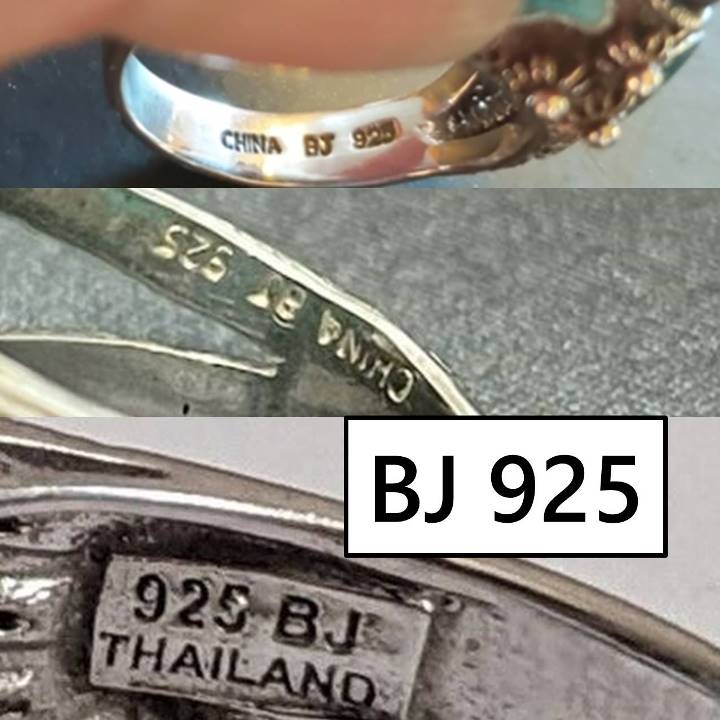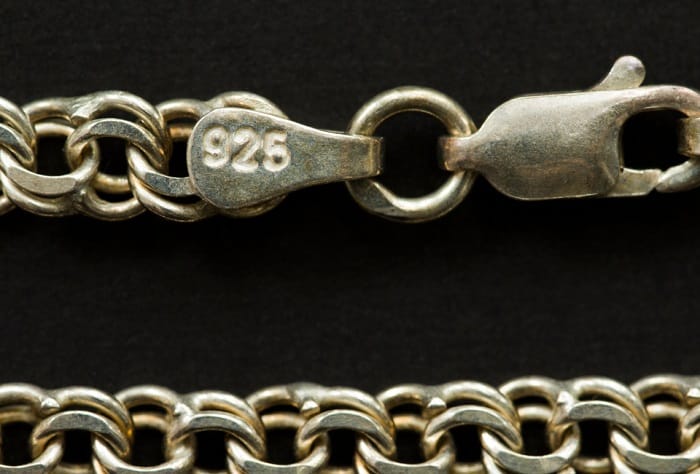Have you ever admired a piece of jewelry, only to notice the small, often inconspicuous, marking “925”? This seemingly insignificant number holds a wealth of information for the discerning jewelry buyer. Understanding the meaning of “925” is crucial for assessing the quality, value, and authenticity of silver jewelry. In today’s market, where counterfeit items are prevalent, knowing how to identify genuine sterling silver is more important than ever. This comprehensive guide will delve into the intricacies of the “925” hallmark, exploring its origins, significance, and practical implications for consumers. We’ll examine the chemical composition, manufacturing processes, and the various ways this hallmark is used to ensure authenticity. We’ll also discuss the implications of purchasing jewelry without this hallmark, highlighting the potential risks and drawbacks involved. By the end of this article, you’ll be well-equipped to confidently navigate the world of silver jewelry and make informed purchasing decisions. You’ll not only understand what 925 means but also gain a deeper appreciation for the craftsmanship and artistry involved in creating sterling silver pieces. This knowledge empowers you to appreciate the value of your purchases and avoid costly mistakes.
Understanding the “925” Hallmark: A Deep Dive into Sterling Silver
The Composition of Sterling Silver
The hallmark “925” indicates that the piece of jewelry is made of sterling silver. This isn’t pure silver, but rather an alloy composed of 92.5% pure silver and 7.5% other metals, typically copper. The addition of copper is crucial. Pure silver (99.9% or higher) is too soft for most jewelry applications; it’s easily scratched and deformed. The copper alloy increases the metal’s durability, making it suitable for crafting rings, necklaces, earrings, and other wearable items. The precise ratio of 92.5% silver to 7.5% copper is what defines sterling silver and results in its characteristic strength, shine, and tarnish resistance (compared to pure silver).

Why Copper is Added
The inclusion of copper isn’t merely a matter of convenience; it’s essential for the structural integrity of sterling silver. Copper provides the necessary hardness and tensile strength to withstand daily wear and tear. Without it, the silver would be too pliable and prone to damage. The 7.5% copper content is carefully balanced to maintain the desirable characteristics of silver while enhancing its durability. Too little copper, and the silver remains too soft; too much, and it compromises the silver’s distinctive appearance and luster.
Historical Context and Standardization
The standardization of sterling silver to 92.5% silver and 7.5% other metals wasn’t a random decision. It emerged historically as a means of regulating the quality and value of silver goods. Different countries and regions have adopted various standards for silver purity throughout history, but the 925 standard has become widely accepted and recognized internationally, ensuring a consistent level of quality for consumers worldwide. This standardization fosters trust and transparency in the silver market, allowing buyers to confidently identify genuine sterling silver pieces.
The Manufacturing Process and Hallmarking
From Ore to Jewelry: A Journey
The journey of sterling silver from raw ore to finished jewelry is complex and involves several stages. First, silver ore is mined and refined to extract pure silver. This pure silver is then alloyed with copper in the precise 92.5% to 7.5% ratio. The resulting alloy is then cast, rolled, or drawn into various shapes and forms, ready for crafting. Highly skilled artisans then shape and refine these forms into intricate jewelry designs. This process requires expertise, precision, and attention to detail, ensuring that the final product meets the high standards expected of sterling silver jewelry.
The Importance of Hallmarking
Once the jewelry is crafted, it’s hallmarked with the “925” stamp. This hallmark serves as a guarantee of authenticity and quality. Legitimate manufacturers and retailers use this mark to ensure that their products meet the established standards for sterling silver. The hallmarking process is often regulated by governmental bodies or independent assay offices, providing an additional layer of consumer protection. This ensures that buyers are not purchasing counterfeit or substandard silver.
Identifying Genuine Sterling Silver: Tips and Tricks
While the “925” hallmark is the primary indicator of sterling silver, it’s not the only way to verify its authenticity. Reputable jewelers and retailers will provide certificates of authenticity alongside their products. Moreover, experienced jewelers can often identify sterling silver through its weight, feel, and appearance. Genuine sterling silver has a distinct luster and weight, while counterfeit pieces may feel lighter or have a duller shine. However, always prioritize the “925” hallmark as the most reliable indicator of authenticity.
Beyond 925: Other Silver Alloys and Hallmarks
Different Silver Grades and Their Meanings
While 925 sterling silver is the most common grade, other silver alloys exist. For example, some jewelry might be marked with “900,” indicating 90% pure silver, or “800,” indicating 80% pure silver. These alloys are generally less expensive than sterling silver but may also be less durable and resistant to tarnish. It’s important to understand the differences between these silver grades to make informed purchasing decisions. Lower grades of silver may be suitable for specific applications but might not be as suitable for everyday wear as sterling silver.
| Silver Grade | Percentage of Pure Silver | Characteristics |
|---|---|---|
| 999 | 99.9% | Very soft, prone to scratches, high cost |
| 925 | 92.5% | Durable, lustrous, widely used in jewelry |
| 900 | 90% | Less durable than 925, lower cost |
| 800 | 80% | Less durable and lustrous than 925 and 900 |
Other Hallmarks and Their Significance
In addition to the “925” hallmark, jewelry may also bear other markings. These can include the manufacturer’s mark, the country of origin, or the assay office mark. These additional markings can provide valuable information about the piece’s provenance and authenticity. Understanding these different hallmarks can help you determine the history and origin of your jewelry, adding to its overall value and significance.
Caring for Your Sterling Silver Jewelry
Cleaning and Maintenance
Proper care and maintenance are crucial for preserving the beauty and luster of your sterling silver jewelry. Regular cleaning can help prevent tarnish and maintain its shine. There are various cleaning methods, ranging from simple polishing cloths to specialized silver cleaning solutions. However, it’s always recommended to follow the manufacturer’s instructions for cleaning your specific jewelry piece. Avoid harsh chemicals and abrasive cleaners, as these can damage the silver’s surface.
Storage and Protection
Proper storage can help protect your sterling silver jewelry from damage and tarnish. Store your jewelry in a cool, dry place, away from direct sunlight and moisture. Using airtight containers or jewelry boxes with anti-tarnish lining can help prevent oxidation and maintain its luster. When not wearing your jewelry, store it separately to avoid scratches and tangling.
Professional Cleaning and Repair
For more extensive cleaning or repairs, it’s advisable to consult a professional jeweler. They possess the expertise and tools to safely clean and repair your sterling silver jewelry, ensuring that it remains in pristine condition. Regular professional cleaning and maintenance can significantly extend the life of your sterling silver pieces.
Summary and Recap
The hallmark “925” on jewelry signifies sterling silver, a valuable alloy of 92.5% pure silver and 7.5% other metals, typically copper. This alloying process enhances the silver’s durability and makes it suitable for creating jewelry. The “925” hallmark is a crucial indicator of authenticity and quality, ensuring that consumers are purchasing genuine sterling silver. Understanding this hallmark is vital in today’s market, where counterfeit items are prevalent. It’s important to look for this mark, along with other hallmarks that indicate the manufacturer, country of origin, or assay office, to ensure the authenticity of your purchase. Proper care and maintenance, including regular cleaning and appropriate storage, are essential to preserve the beauty and longevity of your sterling silver jewelry. Remember to consult a professional jeweler for more complex cleaning or repair needs.
- 925 indicates sterling silver (92.5% silver, 7.5% other metals).
- Copper addition enhances durability and workability.
- Hallmarking guarantees authenticity and quality.
- Other silver grades exist (e.g., 900, 800), with varying purity and durability.
- Proper care and storage are crucial for preserving your silver jewelry.
Frequently Asked Questions (FAQs)
What happens if my 925 silver jewelry tarnishes?
Tarnishing is a natural process for silver. It’s caused by exposure to air and other elements. Regular cleaning with appropriate methods can easily remove tarnish and restore the jewelry’s shine. However, if the tarnish is severe, you may need to consult a professional jeweler.
Is sterling silver hypoallergenic?
While sterling silver is less likely to cause allergic reactions than other metals like nickel, it’s not entirely hypoallergenic. Some individuals may still experience a reaction, though this is less common. If you have sensitive skin, it’s always best to do a patch test before wearing sterling silver jewelry for an extended period.
How can I tell if my “925” marked jewelry is genuine?
The “925” hallmark is the primary indicator of genuine sterling silver. However, always purchase from reputable jewelers or retailers to minimize the risk of counterfeits. If you are unsure, you can take the jewelry to a professional jeweler for verification.
Can I wear my 925 silver jewelry while swimming or showering?
It’s generally advisable to remove your sterling silver jewelry before swimming or showering. Exposure to chlorine, salt water, and other chemicals can cause damage or tarnish. While short-term exposure may not cause significant harm, prolonged exposure is best avoided.
What is the difference between sterling silver and silver-plated jewelry?
Sterling silver is a solid alloy of 92.5% silver and 7.5% other metals. Silver-plated jewelry, on the other hand, has a thin layer of silver applied over a base metal (usually copper or brass). Silver-plated jewelry is significantly less expensive but lacks the durability and value of sterling silver. The silver plating can wear off over time, revealing the base metal beneath.



